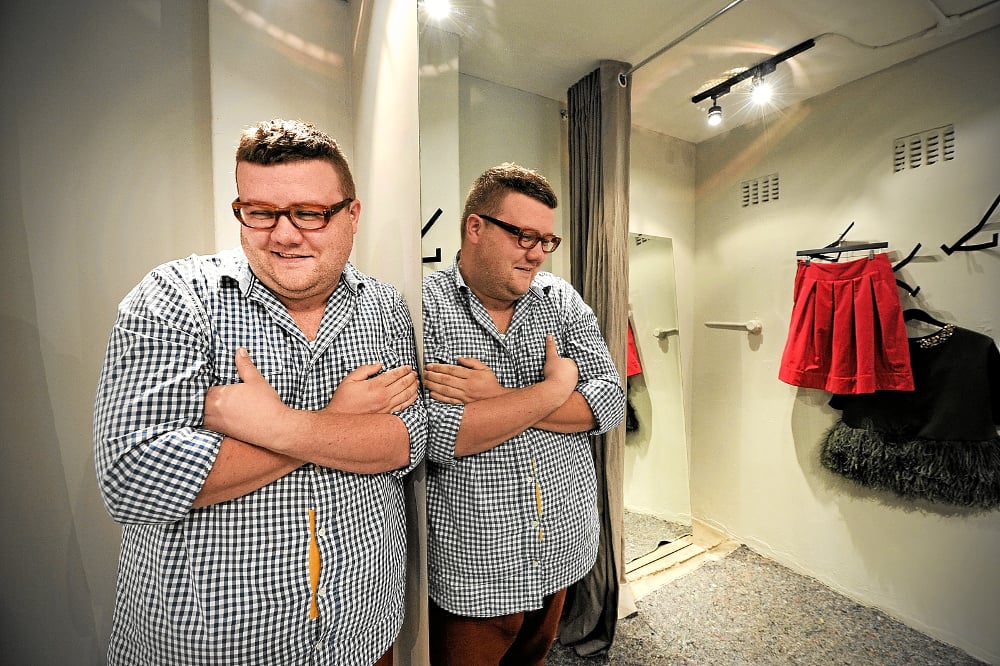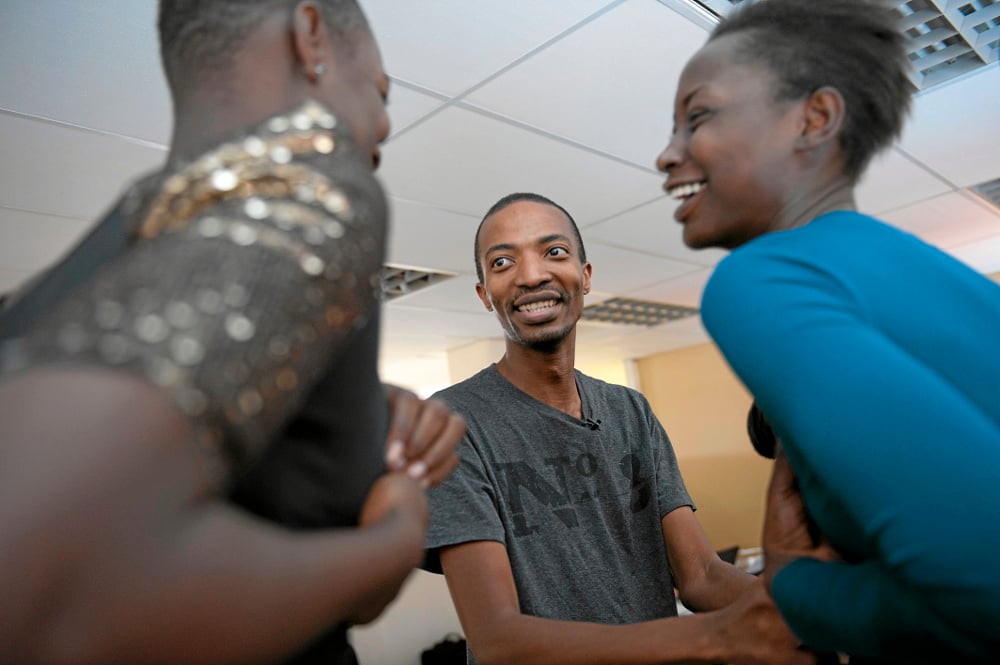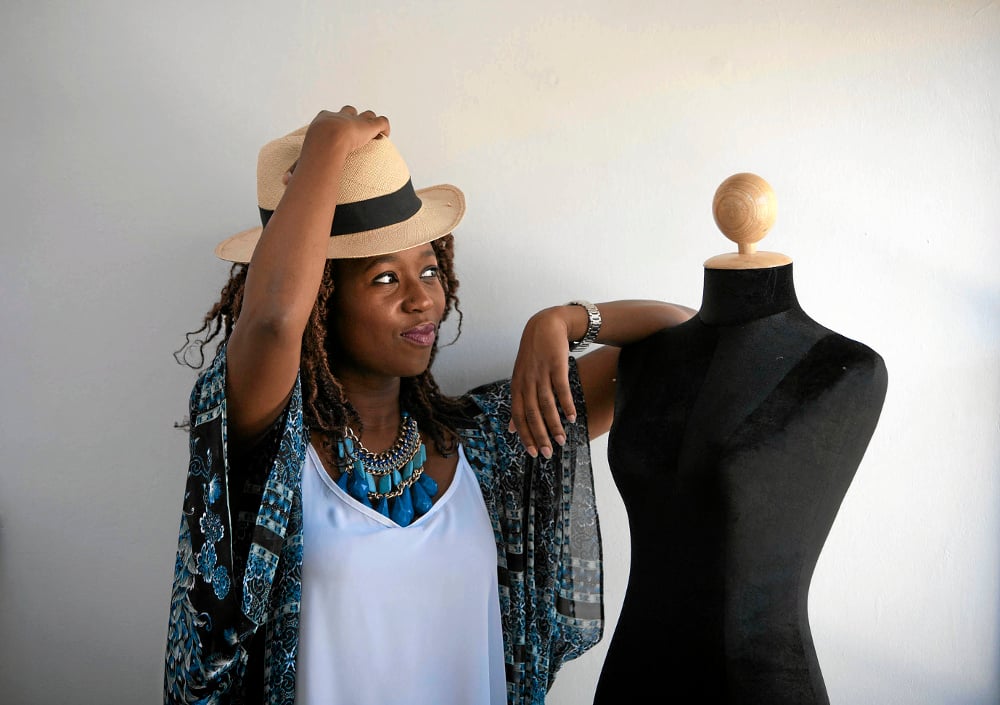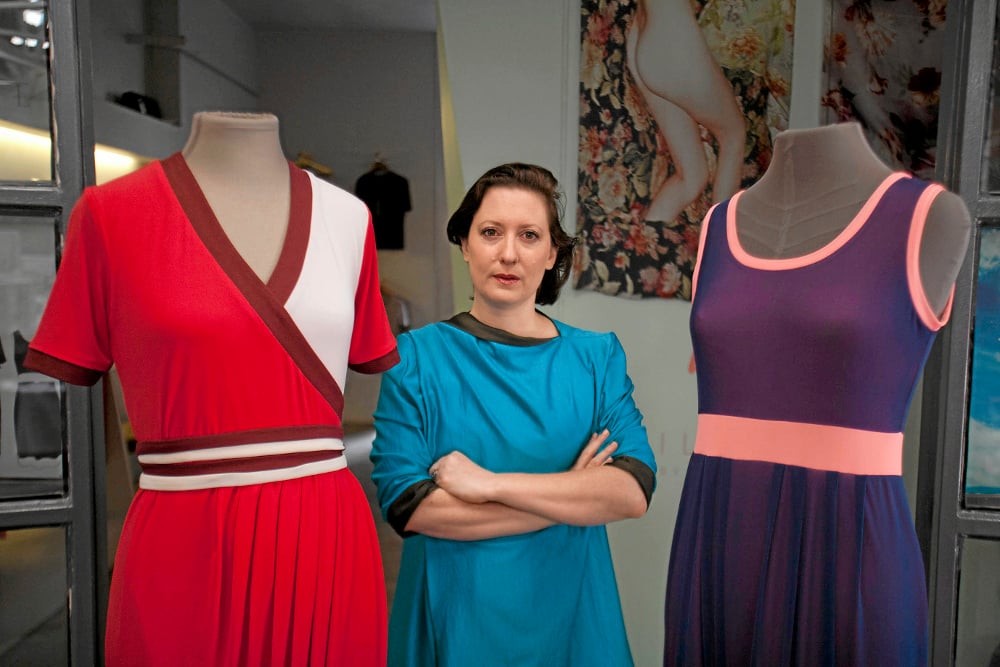SA Fashion Week founder Lucilla Booyzen says it is poor planning that leads to fashion industry failures.
'South African fashion is in a state," says Lisa Jaffe, owner of fashion label Guillotine. With price pressures and increasing competition causing a number of well-known brands and studios to shut their doors during the past year, Jaffe blames the floundering fashion industry in South Africa on the lack of support from both the private and public sectors.
But according to Caren Waldman and Tiaan Nagel (whose labels were among last year's casualties, along with Hip Hop, Christopher Strong and Marion & Lindie), there are plenty of other reasons.
For Waldman, the decision to shut down Two was a difficult one, coming after several attempts to save the label. Waldman set up Two with her sister, Gina, in 2003. From a range of underwear, the label evolved into high-fashion basics "with a twist; creative, but not the kind of stuff you would wear to weddings".
The market loved it: after being approached by SA Fashion Week owner and founder Lucilla Booyzen to show their work in 2006, the sisters were receiving orders of R1.2-million each season. Deciding that the consignment model they were using could be improved upon, in February 2011 Waldman decided to open an eponymous store in Parkhurst.
That's when things started to go wrong: the opening of the store coincided with the introduction of a new wing in Sandton City, housing international fashion favourites such as Zara, TopShop and Cotton On. With consumers enjoying more options, boutiques of the kind that stocked Two fell from favour.
The location of Waldman's store was another problem: flying in the face of Johannesburg's mall culture, it attracted little foot traffic. It shut its doors in February 2013, but although Waldman tried to keep the label alive while working in a Doornfontein office, dynamics were against her. "People would look at a Two T-shirt, priced at R220, and an ordinary T-shirt, costing R89, and there was no contest.
They didn't take into consideration the feel of the product or the fact that it was made from natural fabric."
Add to that the pressure from international labels punting a look that is highly publicised in the local media, plus limited resources – including a lack of mills in South Africa and the existence of only four fabric merchants.
These were challenges that affected Nagel, too. When his studio closed last year, after five years in business, there were a number of factors at play.
"These are tough economic times. As an entrepreneur, it becomes hard to produce garments when you're also trying to balance cash flow, capital and staff costs in these conditions. Added to this, my label played in the premium market, which is already very niche and was made even smaller by the recession."
 Tiaan Nagel. Photograph by Oupa Nkosi, M&G
Tiaan Nagel. Photograph by Oupa Nkosi, M&G Like Waldman, he mentions the dearth of South African production facilities as an obstacle to business success, noting that this makes it necessary for designers to manufacture their goods overseas. But this introduces a new problem, that of minimal runs. As a small producer, Nagel wasn't able to absorb such costs. He also points to government's poor commitment to support entrepreneurs as a problem: the industry would benefit tremendously from infrastructure such as business incubators, he believes.
Then again, the landscape of the South African retail industry doesn't make things easy for designers. Nagel compares it with Europe, where boutiques are happy to stock designers' products. South African retailers tend to opt for imported stock, because it's cheaper, with the result that designers have to open their own stores if they want a showcase.
And then there are the consumers themselves. South Africans, he says, are not discerning; they don't care whether a garment is made from polyester or silk. Moreover, unlike their European counterparts who subscribe to investment dressing, purchasing only a few, higher-priced garments that will last longer, South Africans are easily swayed by a low price tag.
"There are so many fashion graduates, but when you look at how few people actually make it in the long term – we're talking about the likes of Marianne Fassler – you see that the industry just isn't able to absorb them all. What they don't realise is that when you have your own shop, you don't get to sketch all day. You're accountant, delivery boy, everything rolled into one."
Fellow designer Suzaan Heyns agrees. Indeed, she attributes her success, in part, to the presence of her business partner. "Before she came on board I didn't have time to get to emails or interviews. So many designers fail not because they lack talent, but because they don't have a business backer."
Even designers who have flown South Africa's fashion flag on the international market acknowledge that the potential stumbling blocks are manifold.
Says David Tlale: "This industry is about the survival of the fittest. It's evolved over the past 20 years: there was a time when people used to be willing to spend thousands on couture, but they now consider their purchases more carefully. That's forced many designers into ready-to-wear; we've had to create diffusion lines serving different markets. The runway is no longer about frills but about how wearable a garment is, its finishes and quality. This is also what's forced many designers to downsize their studios."
 Thula Sindi. Photograph by Paul Botes, M&G
Thula Sindi. Photograph by Paul Botes, M&G
Thula Sindi, meanwhile, believes the garment industry is certainly a thriving one – the massive turnover of big retailers proves this – but for designers, it's about working out "the kinks". Chief among these is cash flow. Sindi maintains that many of the designers who have shut up shop over the past year did so not because they were unsuccessful, but because liquidity is a constant battle – especially for businesses that have to pay all their costs upfront. "The trouble is that most designers work on consignment, but if the shops don't sell your stock, you are stuck with it."
The best way around this problem is to maintain control over your retail operations or to bypass the consignment model. "The key is to think innovatively, especially when it comes to getting your product to market," Sindi insists. That's why he's launching his own online store in February – and why he insists on building databases of information, so that he knows exactly when and why people purchase his garments.
Heyns maintains that, challenges aside, South Africa's fashion industry boasts an asset that cannot be replicated by international brands: because the garments are produced in small runs, and cannot be bought anywhere else, they are unique.
But trend forecaster and design consultant Vuyiswa Mutshekwane says that this sentiment doesn't cut it with consumers. "South African designers need to realise that the Proudly South African ethos will carry them only so far. They are competing not only against each other, but against the world's best brands – so no one is going to be interested unless they can offer a product that is of superior quality and well priced."
Mutshekwane acknowledges that the issue of price can be a difficult one. Having opened and subsequently closed her own boutique, Twenty-Two, which aimed to develop South African designers while providing a platform for them, this is a dynamic she understands well.
"If you look at our economic landscape, there are a lot of people populating the lower and higher ends. Although our middle class is growing, it's not yet on the same scale as, say, the United States. This means that the most successful retailers are either discount stores or boutiques."
Sitting in the middle, she continues, is the smaller market that's happy to pay R400 to R600 for a garment. It's these, and their more affluent peers, to whom the majority of South African designers appeal – but they're also the ones who are interested in international brands. And, increasingly, they have their pick: soon to be joining the fold are River Island and H&M. "These are expanding businesses, and South Africa is rich territory," Mutshekwane says, explaining their interest in our market.
 Vuyiswa Mutshekwane. Photograph by Lerato Maduna
Vuyiswa Mutshekwane. Photograph by Lerato Maduna
Lauren Avgitidis, brand manager of TopShop and Topman SA, confirms that South Africa presents lucrative opportunities for international brands. "The South African market has huge potential, being the most developed country in the region, with a growing middle class.
"As a result of the digital explosion, South Africans have become increasingly aware of international brands, leading to an astute and trend-focused consumer. This created the perfect environment to introduce our directional and innovative brands." The response, she says, has been as expected: "The brands have been well received, catering to a consumer hungry for the latest fashion trends."
But what about competition? "Our unique selling point is that ranges are directly aligned with those found in the UK, with the primary focus being on season-right merchandise. In addition, an exclusive collection is designed for countries in the southern hemisphere. This allows it to be first to market with the most exciting, on-trend offering."
But it's not only the trend offering of these large international retailers that makes them a threat to our small players, according to Jaffe: once again, the question of price raises its head. "Most of these retailers manufacture their goods overseas, so their costs are a fraction of ours," says Jaffe. "Everything is cheaper for them: fabric, production and, of course, profit on mass produced items. We cannot compete except with ingenuity, an interesting brand and really great design."
Some retailers have found a way around these problems. For example, prompted by consumers' demand for what trend director Joanne Frederic describes as "unique, individual items", Mr Price has in recent months joined forces with a number of local designers, including the likes of the Holmes Brothers, Amber Jones, Anisa Mapungwe, Cleo Droomer, Cindy Leigh Armstrong and Neville Trickett, as well as UK designer Henry Holland.
Mr Price also offers capsule collections by the winners of the Elle Rising Star competition, co-sponsored by Elle magazine, providing a development aspect by enabling them to work at its headquarters so they can gain insight into the retail cycle. "We have had an amazing response to all of our collections, both from the media and the customers. The excitement they generate makes the hard work in putting them together extremely worthwhile," Frederic reports.
Jaffe would, no doubt, describe these designers as fortunate; for the most part, she laments that South African designers are doomed to running small businesses along the same lines as larger organisations, without much support from industry. What would help this situation? "Public support and exposure," she answers. "It would also be good to kickstart local fabric production on a bigger scale."
Support from industry could include mentorships and sponsorships to help entrepreneurs to build healthy businesses, as well as development initiatives to help designers to explore their field and experiment with new cutting techniques and materials. It would also be helpful to establish training centres where designers could improve their current skill sets, access to technology, and encourage and prepare designers for export.
Mutshekwane agrees that there is much that could be done to boost the industry. She picks on the challenge of production; the bugbear bemoaned by almost all designers. "Yes, our manufacturing industry is hampered by a lack of technology and poor access to materials. But it's possible to find ways around this: look at Australian brands, such as Country Road, which are manufactured in China. The stigma around Chinese quality standards is unfounded, as there is an entire scale that ends at the very top – even Louis Vuitton goods are made there."
For those unwilling to look so far afield, there are thriving manufacturing plants in Mauritius and Swaziland, but perhaps most effective would be for designers to place pressure on our local facilities, so that we can grow our own capabilities.
 Lisa Jaffe. Photograph by Oupa Nkosi, M&G
Lisa Jaffe. Photograph by Oupa Nkosi, M&G
Something must also be done to bridge the disconnect that exists between suppliers and designers, Mutshekwane insists. "We do actually have outfits producing quality items that can be used by the fashion industry, but designers don't know where to find them." Her ideal would be to see a trade show, similar to the likes of Las Vegas' Magic, where designers and producers are brought together.
In the meantime, designers also have to be prepared to promote themselves. Mutshekwane says that, although she had no budget for marketing her store, it was always in the news. Her innovative ideas, from hosting pop-up stores to private viewing evenings made sure it was constantly in the limelight. Of course, this is where Heyns' choice to have a business-savvy partner helps.
Jaffe says that it's not only the designers and industry who need to pitch in: consumers also need to be involved, mainly in the form of education. "Most of us are not found in malls but in independent lifestyle centres, so consumers need to make the commitment to get out there and find us, but we also need to encourage them by showing what we're doing." Consumers need to be coaxed to make the leap from the tried and trusted.
"It is easier for them to follow trends. But there's a major misconception at play here: major retailers don't set trends, they follow them, borrowing ideas seasonally from the runway. Designers, on the other hand, set trends years before the mass market gets hold of their watered-down ideas. This happens in all design sectors, and the interpretation is becoming more rapid because of globalisation.
"In South Africa, we follow global and local trends, and are keenly aware of both. I think this is very important, because it requires that we stay awake and are able to design and create a better product by keeping track of what technologies and developments are out there."
In spite of the obvious challenges facing our fashion industry, there is a voice of optimism. Lucilla Booyzen, owner and founder of SA Fashion Week, is adamant that "the South African consumer wants to buy South African designers". Her proof: in 2013, 36 designers (most of whom supply stores or have their own boutiques) showed their ranges at the SAFW Collections. Moreover, the Fashion Agent, an agency representing and selling designers' collections to 45 boutiques nationwide, reported a turnover of R1.38-million during the 13 months from January 2012 to February 2013.
The SAFW Edgars Designer Capsule stores located in Sandton and Melrose Arch have also enjoyed success, and the SAFW Pop-Up boutique hosted at the Booklyn Mall generated a collective turnover of R420 000 in just 19 shopping hours.
Booyzen blames the fashion failures of the past year on poor planning. "It is relatively easy to open a business in South Africa, but if the preparatory groundwork has not taken place, the business will have an inherent weakness." She maintains that, for every business that failed, there are examples of flourishing ones; indeed, Booyzen says, there is a need for more designer stores.
But what of the international competition? "These are chain stores, which should not pose a threat to designers, who should always be one step ahead of such stores. They need to create their own identity and price their collections accordingly. Designer fashion is for the luxury and middle market. The moment designers create garments that have to compete with the mass market, they do not have a chance of survival."